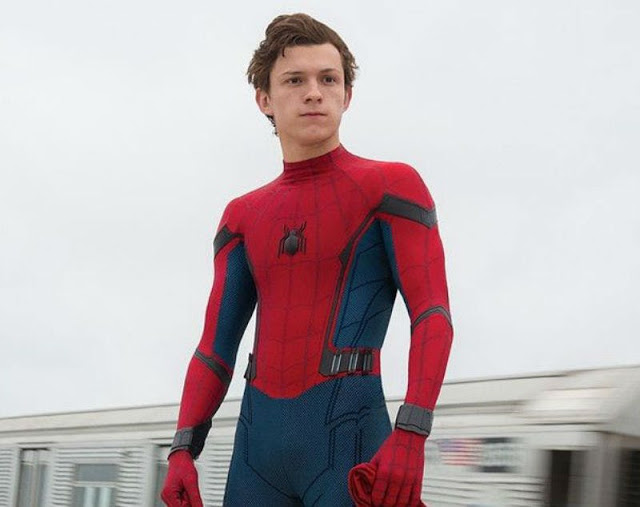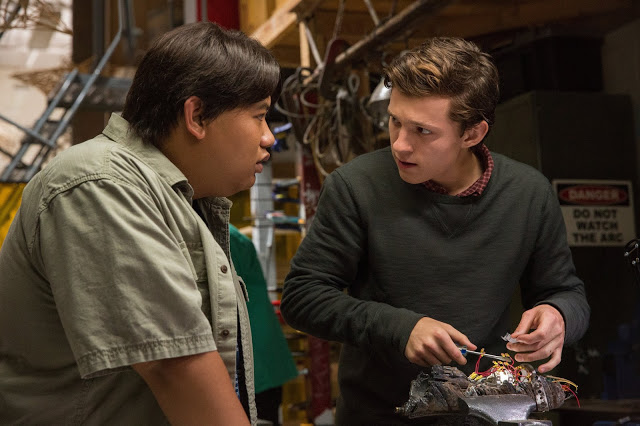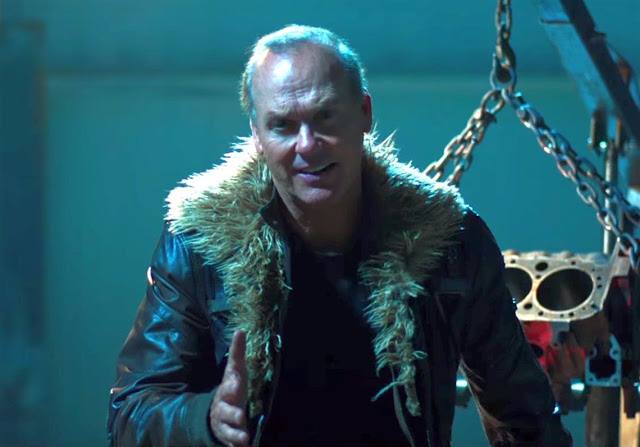Both Peter Parker and Spider-Man are great movie characters, albeit for different reasons. Peter’s appeal is one of drama and narrative; ignore the whole vigilante crime-fighting thing, and he’s the perfect embodiment of nerdy boyhood angst, a decent kid juggling the all-too-familiar teenage problems of school, work, and girls. But Spider-Man’s allure is distinctly cinematic. His particular abilities—the way he springs from one edifice to the next, the way his sticky webs lend his movements physicality and coherence—are uniquely suited to visualized heroism. When Peter struggles to muster the courage to ask a crush to a dance, you can empathize with how he’s feeling. When Spider-Man strains to yank two halves of a splintering barge back together, you can understand and anticipate what he’s actually doing.
Perhaps this blend of thoughtful characterization and dynamic action explains why Spider-Man: Homecoming is Sony’s sixth title to feature Spidey in the last 15 years. Or maybe the studio just likes making money. In any event, Homecoming cannily capitalizes on its hero’s twofold potential, even if it falls short of genuine triumph on both fronts. The gold standard for Spider-Man movies—and for all superhero movies, for that matter (hell, maybe for all movies, period)—remains Spider-Man 2, Sam Raimi’s transcendent fusion of bold adventure and plaintive desire. This ain’t that. But Homecoming, which was directed by relative newcomer Jon Watts from a script by a bevy of writers, is at least a quality effort, a spirited quasi-reboot that captures its hero’s quintessential pluck and delivers a few moments of exhilarating web-based suspense.
To begin with, it’s gratifying to watch an introductory superhero flick—Homecoming represents the first of a planned trilogy—that doesn’t also drag as a tedious origin story. This is partially thanks to Watts’ shrewd understanding of the way Spider-Man has integrated himself into blockbuster mythology. He recognizes that most of his audience has already witnessed both Tobey Maguire and Andrew Garfield transform from a bookish student into a greatly responsible web-slinger, so there’s no need to rewind for round three; a muttered line about a mysterious insect bite more than suffices. But beyond that, we’ve actually seen this particular incarnation of Peter before: in last year’s Captain America: Civil War, when he briefly swiped the title character’s shield and tussled with a number of other Avengers. This allows Watts to avoid cumbersome exposition, but it also presents him with a challenge that’s now customary to directors of franchise fare. He has to tell a compelling, largely self-contained story that also meshes with the ever-morphing, ever-expanding leviathan that is the Marvel Cinematic Universe.
It’s a tricky task, but for the most part Watts threads the needle nicely, as in the opening prologue, when he briefly restages Civil War’s signature airport melee as a grainy, amateurish found-footage production that Peter discreetly filmed on his iPhone. It’s a playful touch, instantly establishing both Homecoming’s lively comic sensibility and its new youthful center. Watts also makes brilliant use of Captain America himself (Chris Evans), who appears throughout the film not in the flesh but in a number of hokey promotional videos shown to Peter and his classmates by their bored teachers, including one played by Hannibal Buress. (Watts also uses this device to poke glorious fun at the MCU’s escalating penchant for post-credit teasers.)
He is less successful with the MCU’s sire. Tony Stark (Robert Downey Jr., barely breaking a sweat before collecting his paycheck) recruited Peter for his cameo in Civil War, and now the kid has the superhero bug, yearning to join the Avengers full-time; he even quits most of his extracurricular activities to focus on local crime-fighting, a training regimen that he feebly dubs “the Stark internship”. But Stark has other ideas, insisting that this eager teenager isn’t ready to play with the big boys.
This clumsy framing device is one of Homecoming’s weakest elements, a plodding piece of world-building that feels shoehorned into an otherwise spry story. It’s especially unfortunate because it renders Peter—played by Tom Holland (The Impossible, The Lost City of Z) in a sweet, winning, “he’s good but he just isn’t Tobey” performance—rather whiny. Our friendly neighborhood spider-man remains dorky and lovable, but there’s something vaguely petulant about his desperation to prove himself, a dreary vibe that chafes against the movie’s lighter tone.
Peter’s obsession with higher-profile avenging gets Homecoming off to a sluggish start, but the film finds its rhythm once it leaves Queens for DC, the site of an academic decathlon tournament. There, Peter and his best friend, Ned (Jacob Batalon, practically wearing an “irritating sidekick” sign), discover that Peter’s Spider-Man suit is equipped with a multitude of special features but that they’re blocked by something called the Training Wheels Protocol. Once they bypass that safety measure and activate the suit’s full array of capabilities—which include different types of webs, vocal modulating, and various adult modes like “interrogation” and “instant kill”—Homecoming starts to unlock its full potential. The action grows sharper, and so do the jokes. In particular, Peter’s banter with Karen, the suit’s Siri-esque assistant who speaks in the soothing voice of Jennifer Connelly, is a consistent comic delight, whether she’s inquiring if he wishes to murder his targets or encouraging him to tell the girl he likes how he really feels.
That girl is Liz (Laura Harrier), the decathlon team’s chair who finds herself and her colleagues imperiled in the movie’s best action sequence, set in, around, and above the Washington Monument. Watts, whose previous feature was the grimy Kevin Bacon vehicle Cop Car, isn’t entirely a master of action, and he can fall victim to some of the genre’s most common pitfalls; the film’s climax, for example, is too dark and muddy, relying on weightless CGI rather than careful choreography. But the scene at the Monument is a stunner, charting Spider-Man’s gravity-resistant tumbling with precision and accumulating breathless tension. The same is true of a later sequence on the Staten Island Ferry, where Peter must use his webs and his wits to prevent the ship from sinking into the bay. Moments like these remind us of why Spider-Man is such an inspirational hero as well as a lovesick pup.
That latter trait is curiously muted in Homecoming, which glazes the romance between Peter and Liz with modest heat rather than passionate fire. Some of this may be intentional—this Peter is too devoted to his vigilantism to pay proper attention to his love life—but after Raimi’s films made the relationship between Peter and Mary Jane Watson their cornerstone, it’s strange to watch a Spider-Man movie whose love story is emotionally rudderless.
But Homecoming is its own thing, and Watts is plainly less interested in cupidity than he is in villainy. His heavy here is Adrian Toomes, a hardscrabble salvager played with sinister charm by Michael Keaton; his alter-ego is Vulture, a giant mechanized bird-man that can swoop down and pluck certain red-and-blue-clad acrobats right out of the sky. The context surrounding Toomes’ skullduggery is yet another MCU tie-in: Initially hired to clean up the city after the chaos from the first Avengers film, he and his crew find themselves unemployed when the Stark-led Department of Damage Control usurps their assignment, so he resorts to selling alien weaponry on the black market. This lends Homecoming a political subtext that, while not necessarily novel—recall that Civil War pivoted on a debate between Iron Man and Captain America that doubled as a Rorschach test for American foreign policy—is nonetheless interesting. Is Toomes’ criminality the work of a sociopath who’s indifferent to others’ livelihood, or is it an understandable reaction from a blue-collar laborer who simply seeks to provide for his family? Who are the real bad guys here, the gun runners or the government?
I don’t know the answer, and I’m not sure that Watts even meant to ask the question—its presence is arguably an inadvertent consequence of Keaton’s sly, layered performance. The actor has a mischievous side to him, but he also knows how to take evil seriously, and his natural intensity proves an ideal counterpart to Holland’s boyish insouciance. As a result, the handful of third-act scenes between hero and villain are both funny and scary. (Also scary: a sequence where Spider-Man finds himself trapped underneath collapsed rubble, an image that evokes 9/11 with alarming force.) They’re emblematic of Watts’ confident storytelling, the way he makes room for strenuous drama and eye-popping visuals without diluting his comedy or his characters. (Bonus points for the way he serves up a killer reveal at around the 90-minute mark.)
Spider-Man: Homecoming is far from the MCU’s best movie; its action, romance, and pacing all have their problems. But there’s a brightness to it that’s hard to resist. There’s enough promise here to suggest that, next time out, Watts and Holland can ditch the training wheels and really get this franchise off the ground.
Jeremy Beck is the editor-in-chief of MovieManifesto. He watches more movies and television than he probably should.





